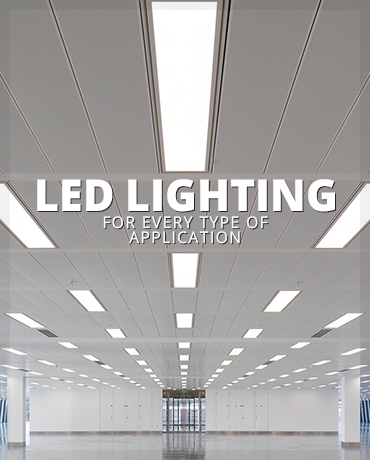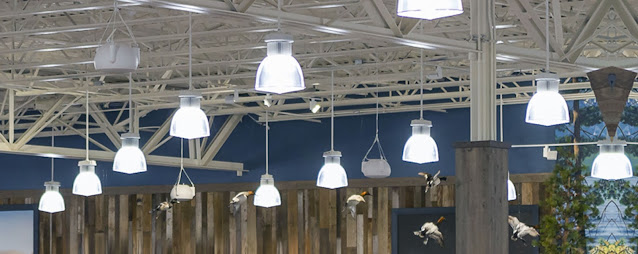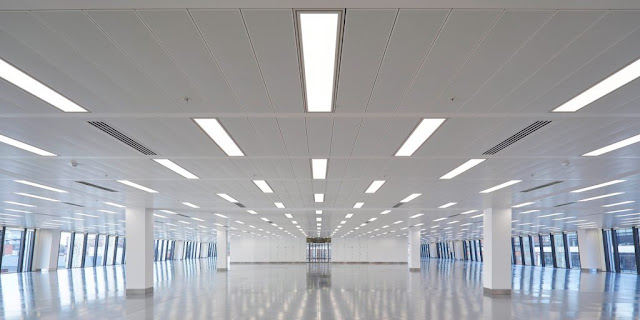If you're interested in saving resources or producing a much safer environment for your business, you might have an interest in the advantages of LED lighting. LEDs are light-emitting diodes that have actually brought in a lot of attention from the commercial market in the last few years.
This lighting service is perfect for a large range of industrial applications, consisting of whatever from workplace lighting to producing lighting.
In this short article, we're taking a more detailed look at some of the significant benefits of LED lighting for your factor to consider.
Advantages of LED Lighting
Light-emitting diodes (LEDs) feature a guarantee of supplying energy performance.
Similarly, the important benefits of LED lighting for commercial applications translate into utility energy-saving chances in a good number of specific niche markets.
The same can be stated about the design and function of LED lightning which are an improvement over fluorescent fixtures or traditional metal halide.
It can, for that reason, be stated that LEDs are a cost-efficient service for the entrepreneur who is aiming to safely and effectively illuminate their storage facilities, car park, producing areas, and usually, buildings.
This and a lot more can be credited to the enhancements in LED industrial lighting and we'll proceed and define each of these advantages for makers who are considering their adoption for industrial applications. In this short article, we're taking a more detailed look at a few of the advantages of LED lighting for your factor to consider.
A good number of factors which can be explained regarding why LED lighting is better makes them superior to fluorescent.
Companies that understand these advantages have actually turned to its usage in order to meet their lighting needs.
Here are 9 advantages of LED lighting for business applications.
1. Cost Savings
One way companies can increase profit is to reduce costs.
While there are a number of ways for an organization to save cash, an effective strategy that can likewise make that possible is with making use of LED components.
This is since LED for commercial applications has cost savings potential ranging from its capability to reduce energy use, waste, and maintenance expenses.
With each of these in check, it can be stated that LEDs are an efficient technology.
Being energy efficient means that services can save money on energy costs.
Another location of cost savings comes from the truth that even though LED bulbs are more expensive than their halogen or fluorescent bulbs counterparts, they last a lot longer.
This indicates that they do not need to be changed for a variety of years and in the long run, less is invested in their upkeep.
In addition, your company minimizes both manpower and labor hours that would've been put into changing bulbs in the first place.
2. Energy Efficiency
LEDs are energy efficient and if you will not take our word for it, you can depend on that of the U.S. Department of Energy (DOE).
According to DEO, LEDs are 75 to 80 percent and 65 percent more energy-efficient than standard incandescent bulbs and halogen bulbs, respectively.
For instance, standard incandescent bulbs just use 10 percent of the energy they consume to produce visible light while 90 percent is released as heat.
In the exact same vein, halogen components, utilize just 20 percent of the energy they take in to create visible light while 80 percent is lost as heat.
When it concerns LEDs, 80 percent of the energy taken in is used to produce light, and only 20 percent is emitted as heat, enabling your a/c to be on less frequently.
Thus, this varies considerably from the other 2 innovations.
As a result, LED bulbs as a modern technology take in less energy in contrast to the previously mentioned out-of-date technologies.
How is this beneficial to you? You might wonder.
Now if you're a commercial enterprise wishing to get some lighting to support long working hours, security, or security of the production center, then LED lights are a much better alternative since they can conserve you millions of dollars on an annual basis.
3. Safer Light
It's no longer news that mercury is contained in fluorescent lightbulbs and hence if they ought to break, it could expose people around the area to this aspect.
However, direct exposure to a small amount is not as risky but in time, might trigger neurological and behavioral disorders.
That's outrightly among their drawbacks.
So, is LED lighting safe?
LEDs are safe for humans and the environment because they are devoid of mercury and co2.
You've got your response there.
4. Service Life
In contrast to incandescent and fluorescent bulbs, LEDs last longer.
Here's what it looks like:
The lifespan of LEDs ranges between 50,000 to 100,000 hours (in commercial environments) whereas standard lightning struggles to offer 1,000 to 30,000 hours support.
A closer look at that information shows that LEDs can last two to three times longer when contrast is made with incandescent and halogen.
Similarly, at 50,000 to 100,000 hours, it suggests that if they are powered for 8 hours every day of the week, they can last as long as 10 years before there is a requirement for replacement.
There is, for that reason, a distinction in between which is a product of higher quality.
It's even much better when you consider that LEDs beat compact fluorescent lamps (CFL) and it likewise lasts 3 times longer than these.
Here's an introduction to the different kinds of light bulbs and their life expectancy.
- LED: 40,000-- 150,000 hours
- Fluorescent: 24,000-- 36,000 hours
- HID: 10,000-- 24,000 hours
- Compact Fluorescent Plug-in: 10,000-- 20,000 hours
- Compact Fluorescent Screw-based: 8,000-- 10,000 hours
- Halogen: 2,000-- 4,000 hours
- Incandescent: 750-- 2,000 hours
There's also the long-lasting nature of LED lights over fluorescent or incandescent bulbs that makes them perfect in business environments including making facilities, and warehouses.
5. Less Heat Generated
There's the expense of providing electrical energy in your commercial enterprise on one hand, and the expense of running an Air Conditioning system in the summertime, on the other hand. However, both costs can be decreased by making use of LED lighting that produces less heat. It's even lower when you compare it to other types of lighting considering that it uses more of its obtained energy to supply visible light instead of generating heat. As a consequence, they can be left on for longer time periods and lower the requirement for the space to be cooled. Another element that needs to be considered is the decrease in the threats of a fire happening. This is since less heat is given off and LEDs operate on low-voltage electrical systems which goes a long way to prevent overheating that could harm fixtures/sockets and lead to a deadly occasion.
6. Limitless Design Options
The lighting components do not only help to brighten the room, but they likewise make it visually appealing. For this reason, they are available in various styles while aiming to provide the very best aesthetic appeal. Nonetheless, they do not lose concentrate on their objective of being energy effective, cost-saving advantages, and decreasing the production of heat.
7. Versatility
It may be worthy to keep in mind that you can use LED lighting just about throughout your company. It could be in the office space, car park, art display room, and so on in order to enjoy the light quality advantages which likewise conserves money on electrical energy. Hence, the flexibility of LEDs makes them a good option for indoor and outdoor usage.
8. Manageable
LEDs give you control over your business environment since they feature abilities such as daylighting, dim-ability, occupancy sensing units, timers, amongst other alternatives. Let's take the dim ability, for instance, you can get a level of brightness that is most ideal to you depending on the time of the day. During the day, as natural light from the sun streams in, LEDs can automatically adjust to mix with the lightning demands for the moment. They also have directional control which suggests you can point the lights to specific directions without wasting excess energy. Over and above that, they have the ability to produce more focused light at 180 degrees, unlike conventional lights that produce this focused light at 360 degrees.
9. Switched on and Off Quickly
LED lights do not take time to warm up as holds true of standard lightning. Within nanoseconds, it would've turned on to supply the lighting needed. There's also the added advantage that turning these lights on and off regularly does not tamper with their life span like it would easily affect that of incandescent and fluorescent bulbs.
Conclusion
These are some of the advantages of LED lighting for commercial applications which have actually made them a trend in today's centers. They are ideal for usage in lighting production facilities, office spaces, hallways, and normally, indoors and outdoors.
Asides from supplying light as demanded like other lighting innovations, it takes the additional action to be a cost-effective service thanks to its energy-saving and minimized heat producing capability. These advantages have actually made them the market's fastest evolving energy-saving technology. So, have you been giving major thought to which light should grace your center? Then you would not go wrong by settling with LEDs.



Comments
Post a Comment